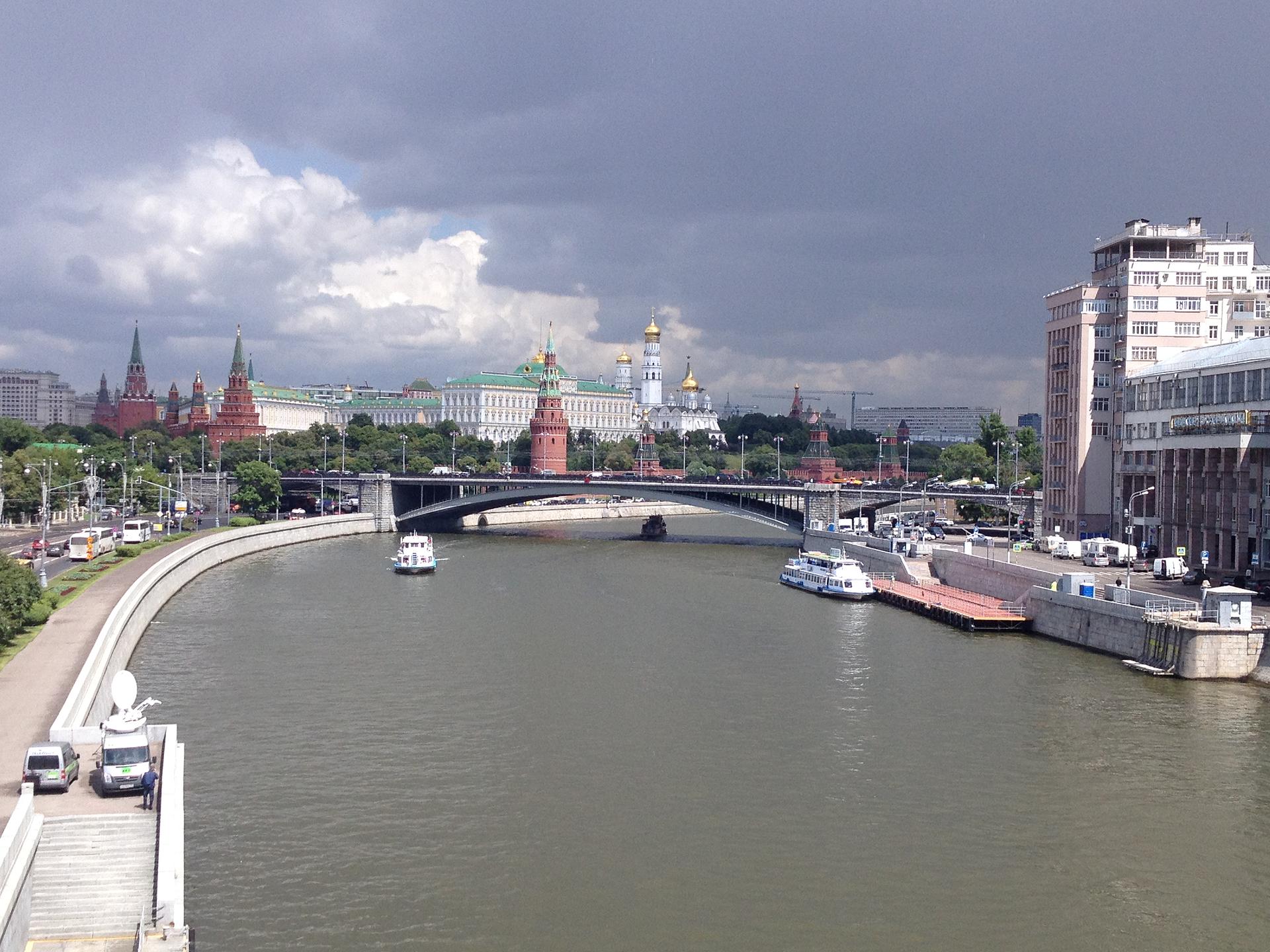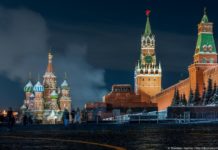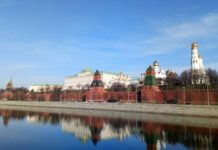Posted By London office in CAT Bonds, CEE, ILS, Pension & Hedge Funds, World Bank
The three of us were in Moscow at the end of May 2017 and, early in the afternoon of Monday 29 May 2017, while being driven back into Moscow from a meeting on the outskirts of the city, we, together with the entire population of the region, were hit by a short sudden and furious storm, The storm killed sixteen people and caused considerable damage. Local media and international weather sites reported that it was the deadliest storm to hit Moscow in 100 years of meteorological monitoring and likely the most ferocious storm in that period.
That sudden and fatal storm served as a reminder that, as the largest country in the world, Russia, is inescapably susceptible to natural disasters. While these natural catastrophes may not be as well known as North Atlantic hurricanes or Japanese earthquakes, they are real and they cause physical and economic loss on a regular basis. Although, the Moscow storm was, in itself, a rare event, flooding and wild fires as well as Pacific typhoons in the Far East of the country, are more common events. Furthermore, with a developing agricultural sector some sudden peak climate events like hail or unusual frost can cause significant economic loss.
As Russia’s economy grows, the need for protection against such disasters becomes more urgent and important. That urgent need corresponds with a unique opportunity and Russia is perfectly positioned to take advantage of a whole spectre of solutions, which have been developed over some decades in the West and now represent proved matured instruments which are available through a sophisticated market.
Of course, one obvious solution is insurance. One only has to look to the impact that insurance protections had in the aftermath of Superstorm Sandy, which hit the North East of the USA in 2012, to see the benefits that that solution can bring. At the time of Sandy, the region was still suffering from the economic consequences of the market collapses of 2008. The arrival of insurance claims money aided reconstruction, not only of the storm damaged property and infrastructure, but the economy itself.
Sandy does, however, also point to a problem, which very much exists in Russia. In the North Eastern USA, possibly the most economically advanced area of the globe, only 50% of the economic loss associated with the storm was protected by insurance. In Russia, insurance penetration is a mere fraction of that (1,3-1,4 %), which in fact is almost uncountable where the damage size comes to the federal or even regional level.
Accordingly, insurance whatever it is, would still leave a considerable economic shortfall. The cost of infrastructure repairs would, as they were after Sandy, fall on the state. The need to rehouse uninsured or underinsured populations devastated by a catastrophe must also be funded by the government, as would the burden of reconstructing industry.
In turn this would impose a significant burden on taxpayers or government resources and that burden would all fall on one fiscal year.
Insurance does not assist the state in these circumstances. Insurance requires that the party purchasing it must have an insurable interest. While the state might have ownership of some infrastructure and a legal or constitutional obligation to assist some reconstruction, this would be a severely limiting factor. In addition, insurance claims are only paid after proof of loss, a process that can lead to delay when, after a disaster, funds are often immediately required.
There is, however, an instrument, which can be effectively used to mitigate all such issues and allow quite a comprehensive solution at the macro level. Catastrophe (CAT) Bonds, as part of Insurance Linked Securities (ILS) market, provide a mechanism that avoids these problems and a solution that enables the government to receive funds swiftly once a disaster has struck and the parametric trigger activated.
There are two perspectives to be mentioned. One is CAT Bonds as indemnifying mechanism for the economy and another is as established uncorrelated asset class for investors who already actively working with such market or those who can be interested on the basis of previous positive Russian capital market experience.
A catastrophe bond with parametric trigger does not require insurable interest or proof of loss. Funds are held and immediately available provided certain weather-linked parameters exceed the respective threshold.
Such a type of risk transfer is keenly supported and developed not only by governments or relevant authorities (New York Metropolitan Transportation Authority, US National Flood Insurance Program, Florida Hurricane Catastrophe Fund, Texas Windstorm Insurance Association, California Earthquake Authority, Caribbean Catastrophe Risk Insurance Facility, Mexican Government, China Re, Turkish Catastrophe Pool, Japanese National Mutual Insurance Federation of Agricultural Cooperatives, African Risk Capacity, etc.) but also by the World Bank as it allows an effective solution for entire economies in case of large disasters. This is doubly important for developing countries with small general insurance market penetration. Covered perils range from Hurricanes and Earthquakes to pandemic and multi-cat exposures.
A duly structured ILS solution can give the Russian Government the ability to obtain immediate access to money with which to attend to urgent disaster relief as well as providing funds which can be used to restart the economy of an affected region after devastation and money to take preventative actions for the future to eliminate or reduce the possibility of further catastrophe. It will also allow the government to make its regions resilient to catastrophe and strengthen economic growth.
Additional positives for the potential of for Russian CAT Bonds include the length and quality of data relating to disasters and meteorology, good reputation and experience in general international Eurobonds issuance, natural interest in Russia capital market investments by many institutional players and Russian interest in the new innovative effective products according to economy developments plans.
A further angle is the investors’ perspective that tends particularly to embrace Insurance-Linked Securities featuring a parametric trigger. Transparency, lack of moral hazard and the objectivity of such a mechanism constitute a compelling package of benefits in an investment universe where most transactions are structured with an indemnity trigger (c. 65% of the Catastrophe Bonds are following an indemnity trigger). Furthermore, unlike indemnity triggers where it can take years to reveal the ultimate loss, parametric transactions provide a swift determination of loss, which is of benefit to both issuers and investors.
Secondly, a Russian Cat Bond has the potential to enhance investor funds’ diversification profile. The Catastrophe Bond space primarily covers hurricane risks with a geographical focus on the East Coast of the US. As investors seek to diversify their portfolios, each ‘non-peak’ issuance with no, to little, correlation to the rest of the ILS universe, has the potential significantly to improve the diversification profile of a portfolio. Analytically, this would contribute to better risk-adjusted returns and improved tail risk metrics.
With regard to both modelling and pricing – it is worth noting that parametric transactions typically benefit from decreased model uncertainty and hence increased pricing accuracy.
Finally, the question of socially responsible investing has become increasingly important to institutional investors such as pension funds and endowments. Specifically, investors examine ethical considerations as well as the correspondence between particular transactions and their impact on society. Almost by definition, governments that sponsor Catastrophe Bonds are doing so in order to support the stability and resilience of their financial system and standard of living of their citizens. That, in turn, is likely to be appreciated by investors who prioritise responsible investing.
A good example of this is Hurricane Patricia. The government of Mexico had sponsored the issuance of two Catastrophe Bonds to protect its economy from earthquakes and hurricanes (in 2009, and following its maturity, a new issuance in 2012). Hurricane Patricia in October 2015 was the most severe storm ever observed in the Pacific Ocean. The central pressure of Patricia had fallen below a pre-defined threshold, as defined in the prospectus of the respective CAT bond, and the government of Mexico was paid USD 50 mm, a considerable amount of money assisting the government in its reconstruction efforts.
Russia needs a solution to the losses caused by natural catastrophes. CAT bonds present a very workable solution to this issue as well as offering investors, both within and outside Russia, with a useful and diverse investment opportunity.
-END-
About the authors:
Kirill Savrassov is Chief Executive of Phoenix CRetro, niche Bermudian reinsurer and ILS specialist with particular focus on the development of ILS activities in Central & Eastern Europe. Prior to founding the company in 2013, for over a decade he was working as a broker on the London & international markets and ran regional networks in Former Soviet Union for various Lloyd’s broking houses.
Clive O’Connell is Head of Insurance & Reinsurance at McCarthy Denning, London law firm. With over 35 years of experience, Clive is an acknowledged expert in the area of ART & ILS. He also serves as a non-executive director to a number of insurance related entities including an ILS Fund manager and sits on the board of and is General Counsel to the International Insurance Society.
Rom Aviv (Roman Muraviev) is Managing Partner of IBI ILS Partners, an ILS focused joint venture with IBI Investment House Ltd., a leading Israeli asset manager. Before co-founding the company in early 2017, Rom was Head of Cat Bonds at Twelve Capital AG, Zurich based specialist fund, where he was managing portfolios with over USD 800 m. in Cat Bonds.



